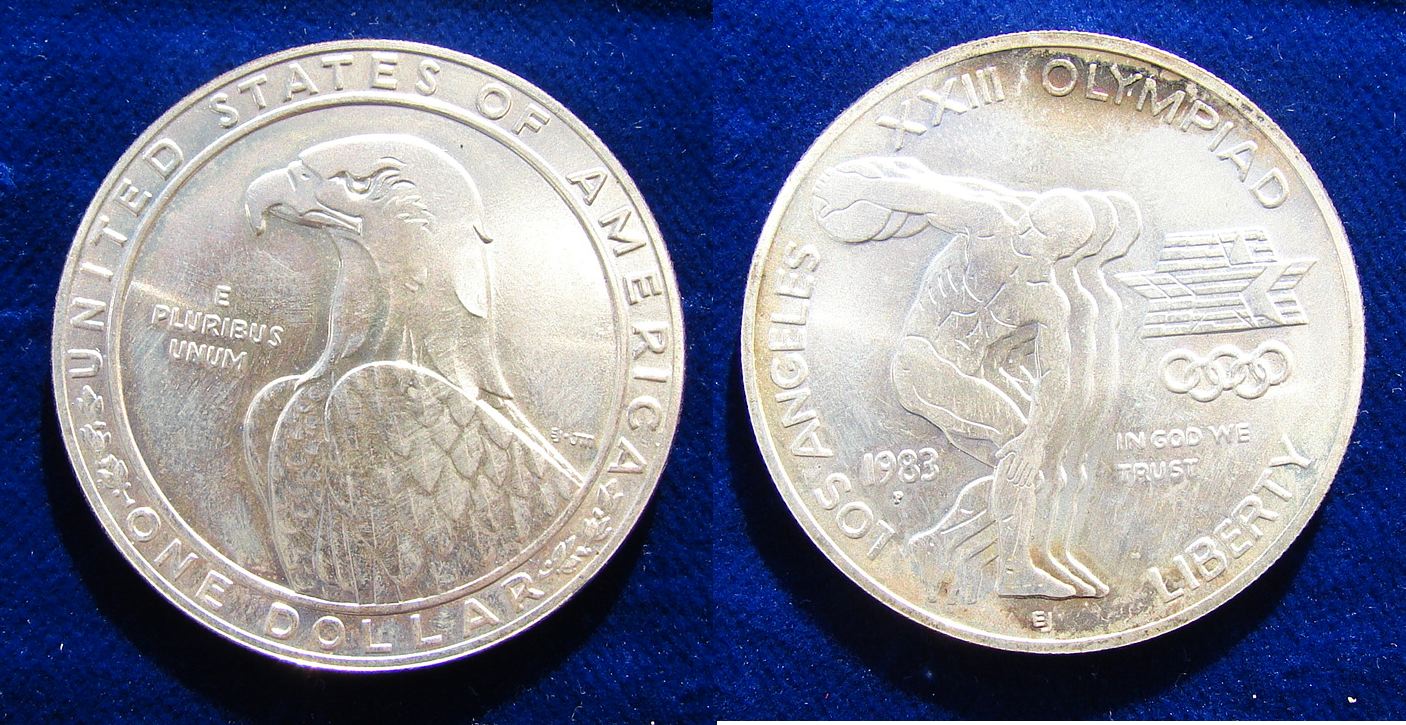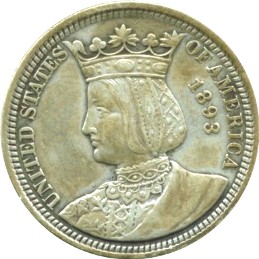|
John Marshall Commemorative Dollar
Specifications *Box Color: Navy Blue *Edge: Reeded *Weight: 26.73 grams *Diameter: 38.1 millimeters *Composition: 90% Silver, 10% Copper *Silver Content: 0.77344 ounces About this commemorative The John Marshall Commemorative Dollar was issued in 2005 making it a modern commemorative. The Obverse depicts a profile of John Marshall and was designed by John Mercanti. The reverse shows the interior of the Supreme Court Chamber during the time Marshall was a justice. Mints Proof and Uncirculated *400,000 (P - Philadelphia Mint in Philadelphia, Pennsylvania) See also * * * United States commemorative coins The United States Mint has minted numerous commemorative coins to commemorate persons, places, events, and institutions since 1848. Many of these coins are not intended for general circulation, but are still legal tender. The mint also produces c ... * List of United States commemorative coins and medals (2000s) References United States Mint Certificate of Authenticity for ... [...More Info...] [...Related Items...] OR: [Wikipedia] [Google] [Baidu] |
Silver
Silver is a chemical element with the Symbol (chemistry), symbol Ag (from the Latin ', derived from the Proto-Indo-European wikt:Reconstruction:Proto-Indo-European/h₂erǵ-, ''h₂erǵ'': "shiny" or "white") and atomic number 47. A soft, white, lustrous transition metal, it exhibits the highest electrical conductivity, thermal conductivity, and reflectivity of any metal. The metal is found in the Earth's crust in the pure, free elemental form ("native silver"), as an alloy with gold and other metals, and in minerals such as argentite and chlorargyrite. Most silver is produced as a byproduct of copper, gold, lead, and zinc Refining (metallurgy), refining. Silver has long been valued as a precious metal. Silver metal is used in many bullion coins, sometimes bimetallism, alongside gold: while it is more abundant than gold, it is much less abundant as a native metal. Its purity is typically measured on a per-mille basis; a 94%-pure alloy is described as "0.940 fine". As one of th ... [...More Info...] [...Related Items...] OR: [Wikipedia] [Google] [Baidu] |
Copper
Copper is a chemical element with the symbol Cu (from la, cuprum) and atomic number 29. It is a soft, malleable, and ductile metal with very high thermal and electrical conductivity. A freshly exposed surface of pure copper has a pinkish-orange color. Copper is used as a conductor of heat and electricity, as a building material, and as a constituent of various metal alloys, such as sterling silver used in jewelry, cupronickel used to make marine hardware and coins, and constantan used in strain gauges and thermocouples for temperature measurement. Copper is one of the few metals that can occur in nature in a directly usable metallic form ( native metals). This led to very early human use in several regions, from circa 8000 BC. Thousands of years later, it was the first metal to be smelted from sulfide ores, circa 5000 BC; the first metal to be cast into a shape in a mold, c. 4000 BC; and the first metal to be purposely alloyed with another metal, tin, to create ... [...More Info...] [...Related Items...] OR: [Wikipedia] [Google] [Baidu] |
Standard Catalog Of World Coins
The ''Standard Catalog of World Coins'' is a series of numismatic catalogs, commonly known as the Krause catalogs. They are published by Krause Publications, a division of Active Interest Media. Overview The by-century volumes list by date virtually every coin type, most of which are photographed, with mintage and other information, plus market valuations in up to 5 grades. Listings are by denomination rather than series, as in earlier World coin catalogs. The proprietary Krause-Mishler (or KM) numbers are widely used; for just a few countries earlier systems such as Y (Yeoman) and C (Craig) numbers are given instead. The century format is often considered inconvenient and expensive for those who collect geographically, and date listings are clipped at the century mark. Originally covering 1835 or so to date, the main catalog (first edition 1972) evolved into an annual 20th century-only work, plus separate 17th, 18th, and 19th century volumes which are revised on a three-year ... [...More Info...] [...Related Items...] OR: [Wikipedia] [Google] [Baidu] |
Modern United States Commemorative Coins
The United States Mint has minted numerous commemorative coins to commemorate persons, places, events, and institutions since 1848. Many of these coins are not intended for general circulation, but are still legal tender. The mint also produces commemorative medals, which are similar to coins but do not have a face value, and therefore are not legal tender. History Early commemoratives The earliest commemorative coin minted by the US Mint was the 1848 "CAL" quarter eagle, which commemorated the finding of gold in California. These coins were standard quarter eagles that were modified by punching ''CAL.'' onto the reverse above the eagle. Most standard US commemorative coin lists begin with the 1892 Columbian half dollar commemorating the 400th anniversary of Columbus' voyage to America. The following year, the Columbian Exposition quarter dollar featuring Queen Isabella of Spain was issued. In 1915, the mint issued the Panama–Pacific half union, which had a face value o ... [...More Info...] [...Related Items...] OR: [Wikipedia] [Google] [Baidu] |
John Marshall
John Marshall (September 24, 1755July 6, 1835) was an American politician and lawyer who served as the fourth Chief Justice of the United States from 1801 until his death in 1835. He remains the longest-serving chief justice and fourth-longest serving justice in the history of the U.S. Supreme Court, and is widely regarded as one of the most influential justices ever to serve. Prior to joining the Court, Marshall served as the fourth U.S. Secretary of State under President John Adams. Marshall was born in Germantown in the Colony of Virginia in 1755. After the outbreak of the American Revolutionary War, he joined the Continental Army, serving in numerous battles. During the later stages of the war, he was admitted to the state bar and won election to the Virginia House of Delegates. Marshall favored the ratification of the U.S. Constitution, and he played a major role in Virginia's ratification of that document. At the request of President Adams, Marshall traveled to France i ... [...More Info...] [...Related Items...] OR: [Wikipedia] [Google] [Baidu] |
John Mercanti
John M. Mercanti (born April 27, 1943) is an American sculptor and engraver. He was the twelfth Chief Engraver of the United States Mint until his retirement in late 2010. Biography Mercanti was born in Philadelphia. There, he attended the Pennsylvania Academy of Fine Arts, the Philadelphia College of Art and the Fleisher Art Memorial School. He also served in the Pennsylvania Army National Guard for six years. In 1974, Mercanti joined the United States Mint as a sculptor-engraver after working as an illustrator. On May 19, 2006, he was appointed Chief Engraver of the U.S. Mint (also known as Supervisor of Design and Master Tooling Development Specialist). The position had been officially vacant for 15 years following the retirement of Elizabeth Jones, the Mint's eleventh Chief Engraver, in 1991. In June 2011, Mercanti became a paid spokesperson for Goldline International and appeared in a television commercial for the company. In 2021, Mercanti was named one of Coin World's ... [...More Info...] [...Related Items...] OR: [Wikipedia] [Google] [Baidu] |
Philadelphia Mint
The Philadelphia Mint in Philadelphia was created from the need to establish a national identity and the needs of commerce in the United States. This led the Founding Fathers of the United States to make an establishment of a continental national mint, a main priority after the ratification of the Constitution of the United States. The Coinage Act of 1792 was entered into law on April 2. It proclaimed the creation of the United States Mint. Philadelphia at that time was the nation's capital; therefore the first mint facility was built there. The Coinage Act of 1792 also instituted a decimal system based on a dollar unit; specified weights, metallic composition and fineness; and required each United States coin feature "an impression emblematic of liberty". History First building (1792–1833) David Rittenhouse, an American scientist, was appointed the first director of the mint by President George Washington. Two lots were purchased by Rittenhouse on July 18, 1792, at Sevent ... [...More Info...] [...Related Items...] OR: [Wikipedia] [Google] [Baidu] |
Philadelphia, Pennsylvania
Philadelphia, often called Philly, is the largest city in the Commonwealth of Pennsylvania, the sixth-largest city in the U.S., the second-largest city in both the Northeast megalopolis and Mid-Atlantic regions after New York City. Since 1854, the city has been coextensive with Philadelphia County, the most populous county in Pennsylvania and the urban core of the Delaware Valley, the nation's seventh-largest and one of world's largest metropolitan regions, with 6.245 million residents . The city's population at the 2020 census was 1,603,797, and over 56 million people live within of Philadelphia. Philadelphia was founded in 1682 by William Penn, an English Quaker. The city served as capital of the Pennsylvania Colony during the British colonial era and went on to play a historic and vital role as the central meeting place for the nation's founding fathers whose plans and actions in Philadelphia ultimately inspired the American Revolution and the nation's inde ... [...More Info...] [...Related Items...] OR: [Wikipedia] [Google] [Baidu] |
United States Commemorative Coins
The United States Mint has minted numerous commemorative coins to commemorate persons, places, events, and institutions since 1848. Many of these coins are not intended for general circulation, but are still legal tender. The mint also produces commemorative medals, which are similar to coins but do not have a face value, and therefore are not legal tender. History Early commemoratives The earliest commemorative coin minted by the US Mint was the 1848 "CAL" quarter eagle, which commemorated the finding of gold in California. These coins were standard quarter eagles that were modified by punching ''CAL.'' onto the reverse above the eagle. Most standard US commemorative coin lists begin with the 1892 Columbian half dollar commemorating the 400th anniversary of Columbus' voyage to America. The following year, the Columbian Exposition quarter dollar featuring Queen Isabella of Spain was issued. In 1915, the mint issued the Panama–Pacific half union, which had a face value o ... [...More Info...] [...Related Items...] OR: [Wikipedia] [Google] [Baidu] |
Currencies Introduced In 2005
A currency, "in circulation", from la, currens, -entis, literally meaning "running" or "traversing" is a standardization of money in any form, in use or circulation as a medium of exchange, for example banknotes and coins. A more general definition is that a currency is a ''system of money'' in common use within a specific environment over time, especially for people in a nation state. Under this definition, the British Pound Sterling (£), euros (€), Japanese yen (¥), and U.S. dollars (US$)) are examples of (government-issued) fiat currencies. Currencies may act as stores of value and be traded between nations in foreign exchange markets, which determine the relative values of the different currencies. Currencies in this sense are either chosen by users or decreed by governments, and each type has limited boundaries of acceptance - i.e. legal tender laws may require a particular unit of account for payments to government agencies. Other definitions of the term "currency ... [...More Info...] [...Related Items...] OR: [Wikipedia] [Google] [Baidu] |





